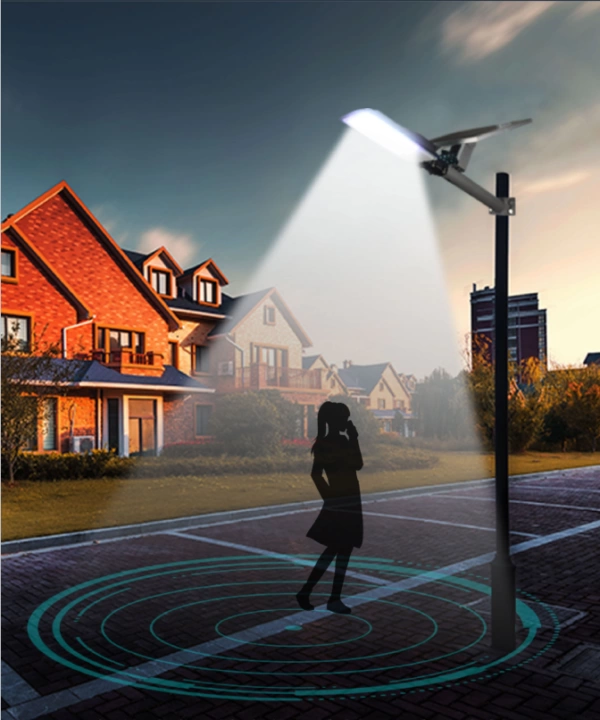
Introduction
Procuring solar street lights from international suppliers involves complex risks—ranging from quality inconsistencies to regulatory hurdles. For B2B distributors, a structured risk assessment framework is essential to minimize disruptions and ensure long-term partnerships. This article introduces a 7-Dimensional Risk Assessment Model to evaluate cross-border solar lighting suppliers systematically.
1. Manufacturing & Quality Control (MQC) Risk
Key Considerations:
- Certifications: Does the supplier hold ISO 9001, CE, RoHS, or IEC certifications?
- Production Capacity: Can they meet bulk orders without quality degradation?
- Testing Protocols: Are products tested for IP ratings, lumen output, and battery cycles?
Risk Mitigation:
- Request third-party lab reports (e.g., SGS, TÜV).
- Conduct factory audits (virtual or on-site).
2. Supply Chain & Logistics Risk
Key Considerations:
- Lead Times: Are shipments delayed due to raw material shortages?
- Shipping Routes: How resilient are their logistics against geopolitical disruptions (e.g., Red Sea delays)?
- Incoterms Clarity: Who bears risk at each stage (FOB vs. CIF vs. DDP)?
Risk Mitigation:
- Diversify suppliers across regions (e.g., China + Turkey + Vietnam).
- Use real-time tracking (GPS-enabled containers).
3. Financial Stability Risk
Key Considerations:
- Creditworthiness: Can the supplier survive market downturns?
- Payment Terms: Are they flexible (30% deposit vs. LC at sight)?
- Hidden Costs: Are there unexpected charges (customs, storage)?
Risk Mitigation:
- Check Dun & Bradstreet reports or Alibaba Trade Assurance.
- Negotiate penalty clauses for delays.
4. Regulatory & Compliance Risk
Key Considerations:
- Import Regulations: Do lights meet EU’s ERP, UKCA, or FCC standards?
- Tariffs & Duties: Are there anti-dumping taxes (e.g., U.S. on Chinese solar products)?
- Local Certification: Does the supplier provide country-specific approvals (e.g., BIS for India)?
Risk Mitigation:
- Partner with local compliance consultants.
- Demand declaration of conformity (DoC) documents.
5. Technology & Innovation Risk
Key Considerations:
- R&D Investment: Are they using latest LiFePO4 batteries vs. outdated lead-acid?
- Smart Features: Do they offer IoT-enabled lighting (motion sensors, remote dimming)?
- BOM Transparency: Can they disclose solar panel wattage & battery brand?
Risk Mitigation:
- Benchmark against top-tier brands (Philips, SolarEdge).
- Require product lifecycle guarantees (e.g., 5-year performance warranties).
6. Reputation & Fraud Risk
Key Considerations:
- Past Performance: Any scams reported on Panjiva or ImportGenius?
- Customer Reviews: Verified case studies from EU/African distributors?
- Clone Factories: Are they an OEM or just a trading company?
Risk Mitigation:
- Use escrow services (e.g., PayPal Trade).
- Check LinkedIn for employee legitimacy.
7. After-Sales & ESG Risk
Key Considerations:
- Warranty Claims: Is there a local service hub for replacements?
- Carbon Footprint: Do they use recyclable materials?
- Ethical Sourcing: Any forced labor (UFLPA compliance) risks?
Risk Mitigation:
- Demand 5-year warranty terms.
- Prefer suppliers with B Corp or SolarScorecard certifications.
Conclusion: Implementing the 7D Model
To operationalize this framework:
- Score each dimension (1–10) for shortlisted suppliers.
- Weight risks based on your market (e.g., compliance matters most in the EU).
- Use a decision matrix to select the optimal partner.
By applying this model, solar lighting distributors can reduce procurement failures by 40%+ (McKinsey, 2023) while building resilient supply chains.



